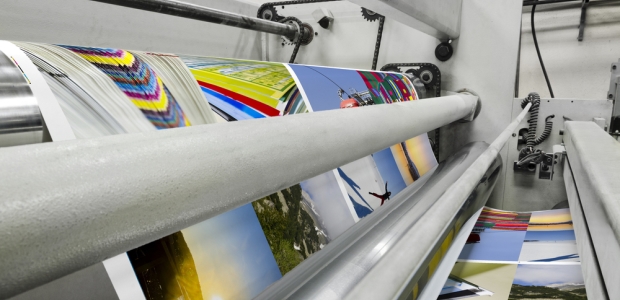
The Greening of the Printing Industry
The Sustainable Green Printing Partnership, a nonprofit organization little known outside of the printing industry, certifies a printing facility's operations as sustainable. Such organizations can be crucial in helping an entire industry become greener and more sustainable.
The printing industry in the United States does not appear to be getting the attention—or the applause—it deserves for its considerable efforts at bringing sustainability and environmental responsibility into its daily operations.
The industry has been aware for more than two decades that the entire printing process—whether it is to print brochures, cards, packaging materials, catalogs, you name it—can and often does have detrimental environmental impacts. So we could say the industry has been taking steps to for several years to "clean up its act."
However, in the past decade, many of the more significant players in the industry have been nudged even more to bring green and sustainability practices into their business operations. This is because their customers, specifically their larger business customers, have begun insisting on it.
At first, these customers simply asked printers about their sustainability programs and efforts to protect the environment. But the process soon became much more formal. Many printers started receiving "sustainability questionnaires" asking very specific questions about what initiatives they have implemented to protect the environment, reduce waste, ensure hazardous waste is properly disposed of, diminish the use of natural resources, and more.
Today, many of those questionnaires have been expanded to evaluate other aspects of their businesses as well. A sampling of these additional questions can include the following:
- Are you paying workers living wages?
- Have you taken steps to protect the health and safety of workers?
- Are workers receiving health and other benefits?
- Are profits generated by fair business practices, and is the business helping to support the local economy?
- Are programs in place to help support the local community?
Enter SGP
Helping the printing industry become greener and develop sustainability initiatives has been one of the key goals of SGP, the Sustainable Green Printing Partnership. This nonprofit organization, little known outside of the printing industry, certifies a printing facility's operations as sustainable. Such organizations can be crucial in helping an entire industry become greener and more sustainable.
In some ways, it can be compared to certification organizations In the professional cleaning industry. For instance, GreenSeal® and EcoLogo were introduced at a time when it was challenging for the entire industry and most specifically, manufacturers of professional cleaning solutions, tools, and equipment, to know precisely what made a product green. These certification organizations helped eliminate this confusion by providing the necessary guidance. This allowed manufacturers and the entire professional cleaning industry to have a more precise idea of what green is and how to select products that have a reduced impact on the user of the products and the environment.
SGP is different, however. It does not certify products. Its focus is on the overall operations of a printing facility and how it can be more environmentally responsible and sustainable. However, just like the green certification organizations mentioned earlier, SGP also has helped provide guidelines and parameters so print facilities can reduce their overall environmental impact. Recently, the organization took another step forward in its goal of making the printing industry greener and more sustainable. The group has introduced the SGP Impact Tracker.
According to Katrina Saucer, program manager for Sustainability Dashboard Tools, LLC, the organization that helped SGP develop the technology, "the Impact Tracker gives printers a single, secure web platform to manage their sustainability efforts. This helps ensure continued progress as they seek to reduce waste further, improve efficiencies, and develop sustainability programs."
More specifically, Saucer indicates the Impact Tracker:
- Monitors and measures sustainability metrics (water, fuel, water, energy)
- Benchmarks sustainability successes
- Measures operational improvements internally and against other printers in the SGP community
- Helps printers grow their business by providing "black-and-white" sustainability statistics that can help printing business owners answer the sustainability questionnaires mentioned earlier.
"It's a powerful tool," says Saucer, "that supports SGP in its important work."
The Takeaway
Our intent here is not to promote SGP. Our goal is to emphasize the value of such organizations generally and acknowledge the contribution they are making to improve sustainability and environmental responsibility. Just as we saw with the professional cleaning industry, these organizations provide the foundations for entire industries to not only reduce their environmental impacts, but also increase sales, reduce risks, maintain a strong employee base, and nourish local communities.
Equally, SGP provides a solution to help the cleaning industry be the conscience of their supply chain. The next time you print labels for your chemicals or sales brochures for your sales team, be sure to ask your printer if they are SGP certified and, if not, request they start the process.
As Gary Jones, an executive with the Printing Industries of America, says, organizations such as these are helping the printing industry "become part of the solution, not the problem."
Robert Kravitz (robert.kravitz@outlook.com) is a frequent writer for the professional cleaning and building industries.